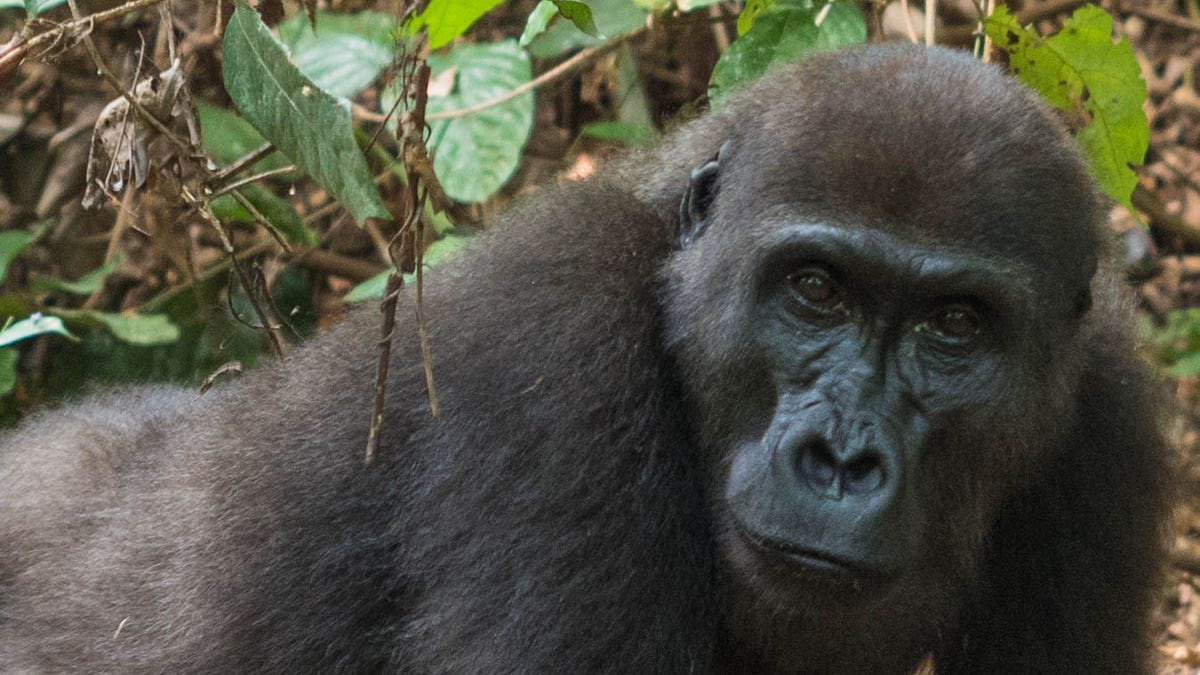
Blackback male Balema singing while eating Bemba seeds (Gilbertiodendron dewevrei). Mark Gately © WCS
It turns out that male gorillas have a little Frank Sinatra in them.
According to a new study, adult male gorillas in the wild, including the dominant silverbacks, sing and hum more during feeding than their younger or female counterparts.
The researchers only observed the behavior in males in connection with food, especially while the gorillas ate aquatic vegetation, flowers, and seeds. Writing in the journal PLOS ONE, the authors suggest that this food-associated calling may be a means of expressing well-being. They also propose that it could aid group coordination and social cohesion.
Related: Baby gorilla delivered by C-section at UK zoo
"Similar to the function of food-calls in chimpanzees, gorillas may call to let their group mates know when it is time to finish eating,” said Eva Maria Luef, who along with her colleague Simone Pika at the Humboldt Research Group at the Max Planck Institute for Ornithology and Thomas Breuer from the Wildlife Conservation Society in New York, conducted the study. "Silverback males may have to call more frequently since they are often the ones initiating changes in group activity", she further explained.
Females and juveniles were quieter, perhaps to reduce these vulnerable individuals’ risk of predation, the researchers said.
Related: Monkey business: Gorilla's message about global warming was staged
The researchers only assessed 20 gorillas in the two groups, and did not analyze ‘singing’ and ‘humming’ calls separately in relation to specific foods. Nonetheless, they note that their findings provide new insight into the vocal abilities of gorillas and may provide new opportunities to investigate the development of vocal communication.
Many mammals and birds vocalize when finding or consuming certain foods. The phenomenon had been studied in chimps and bonobos, but only anecdotal evidence previously existed for gorillas. The authors of this study tracked two wild western lowland gorilla populations in the Republic of Congo, recording and analyzing the calls that gorillas of different ages and sexes produced in response to various foods.




















